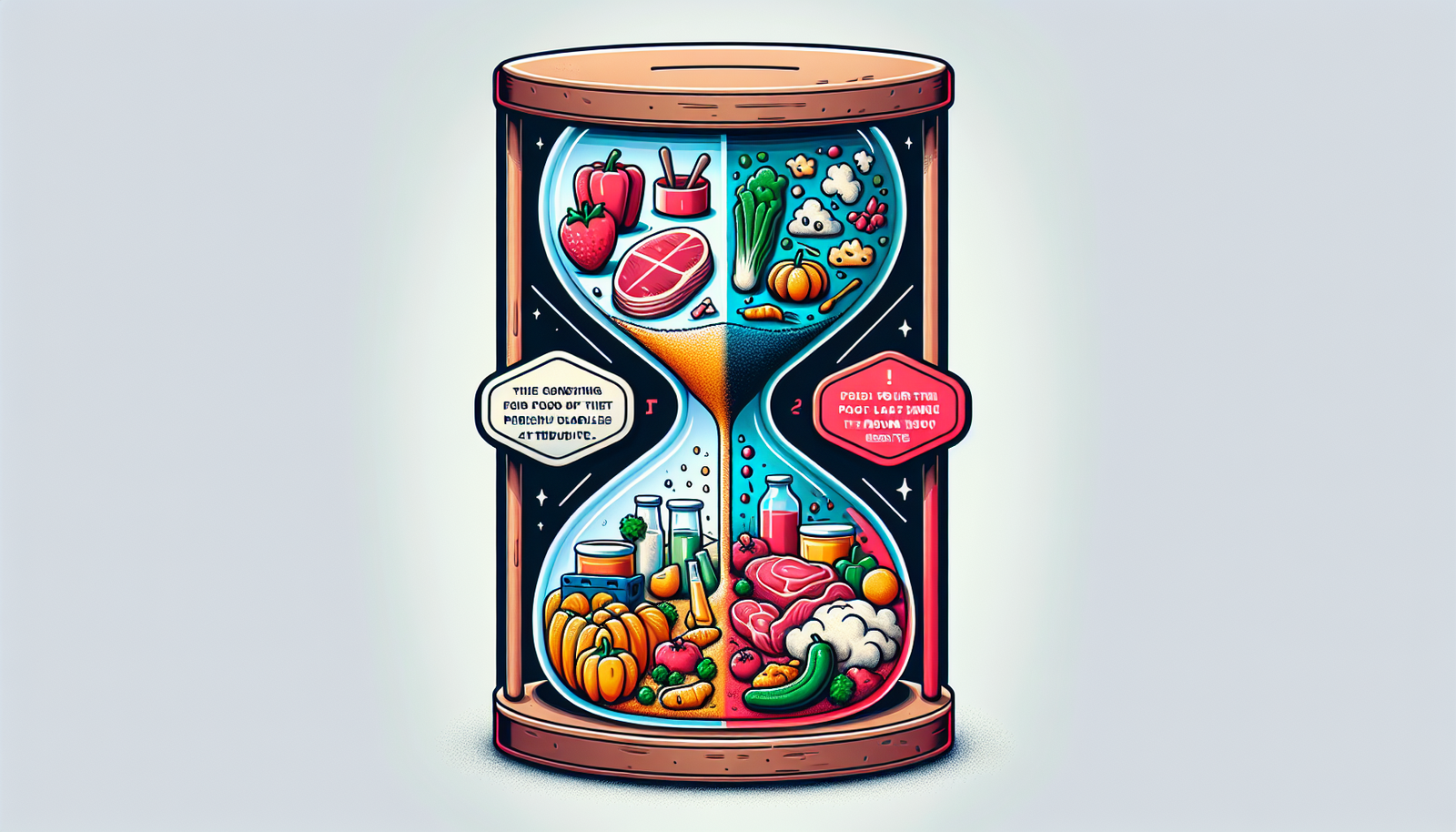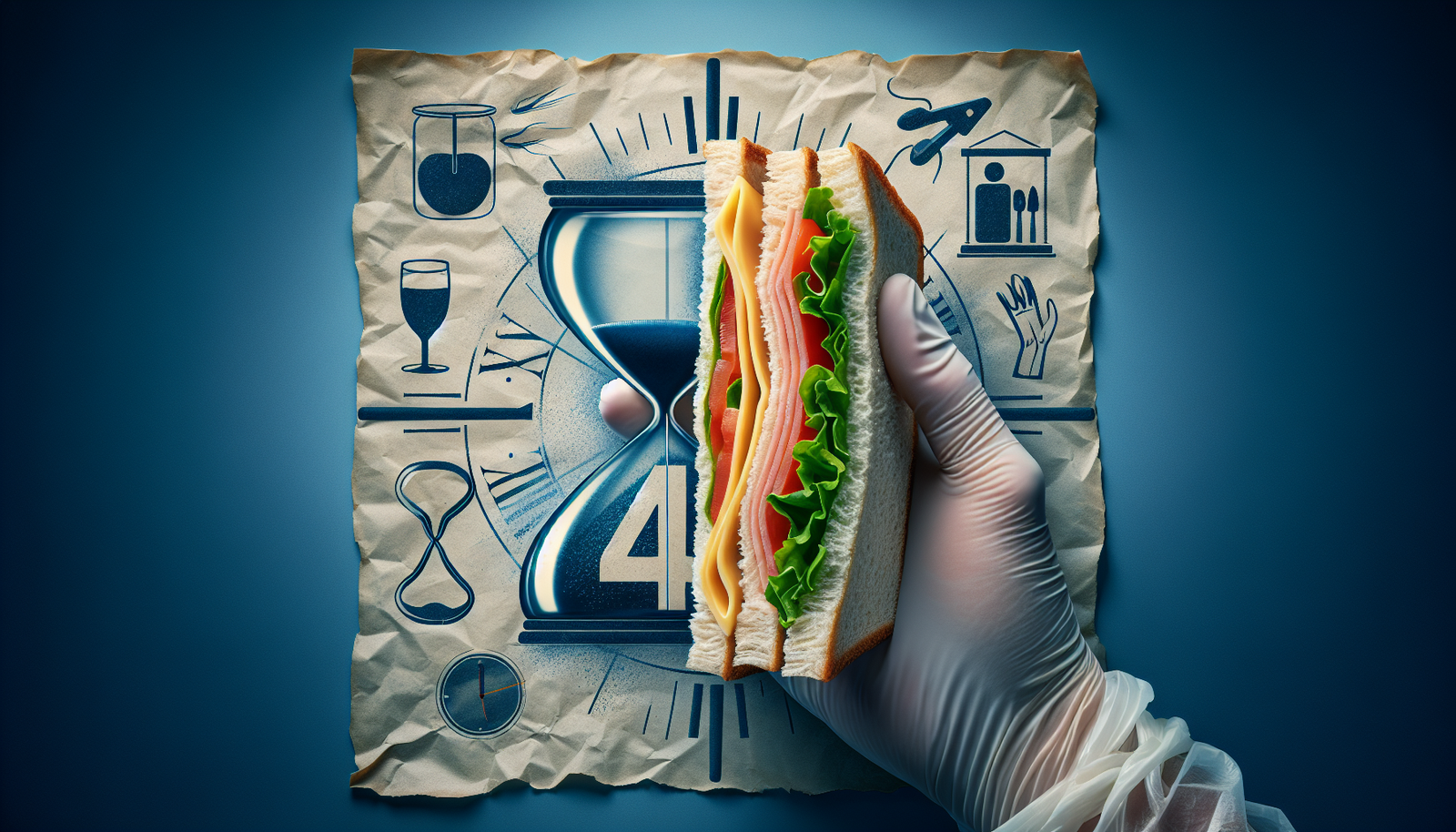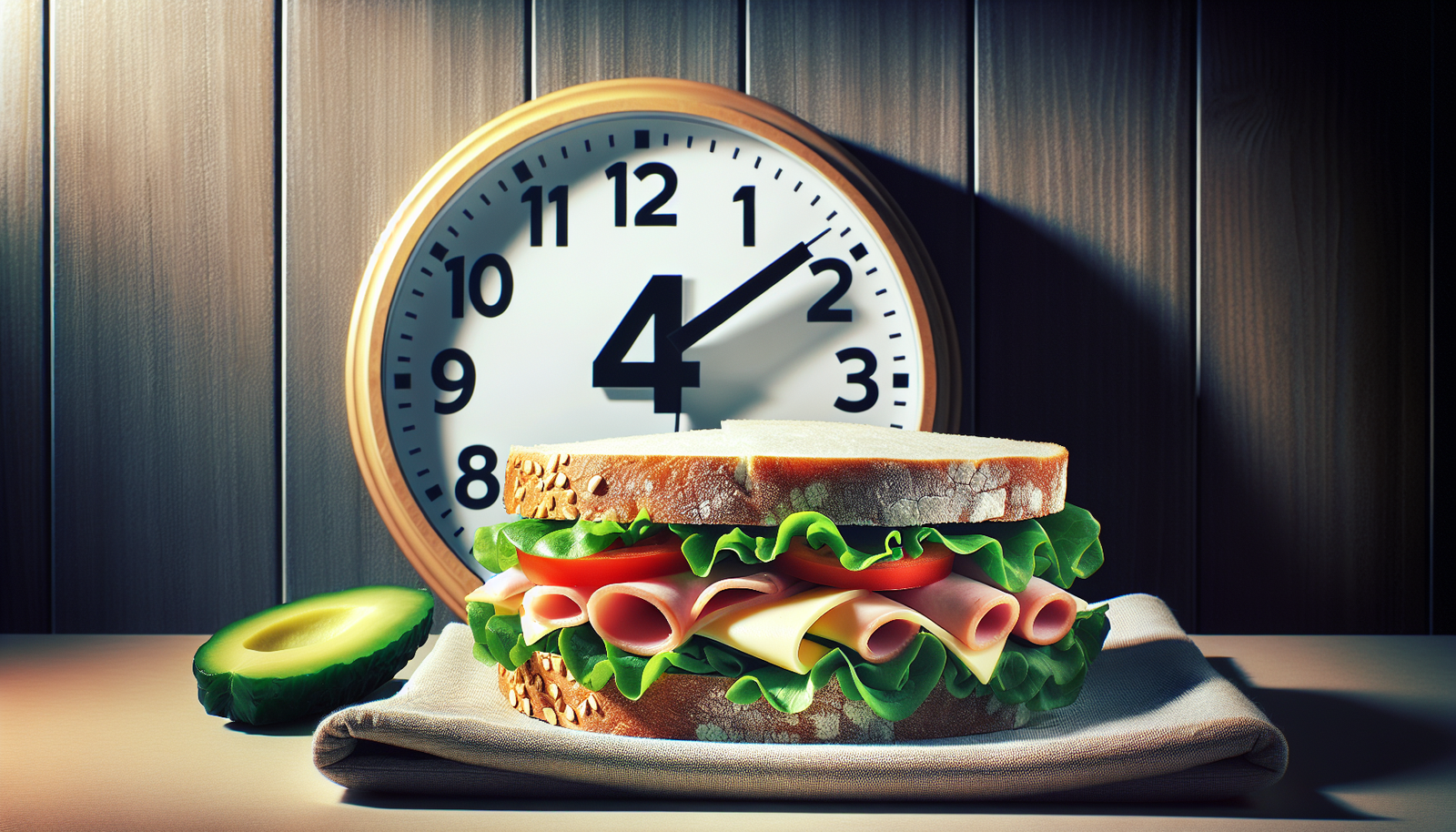Imagine you’re hosting a backyard barbecue and you’ve prepared a mouthwatering spread of delicious dishes. Your guests arrive and start feasting on the scrumptious food, but as the afternoon progresses, you begin to wonder how long it’s safe to leave the food out before it becomes a breeding ground for bacteria. Enter the 4 Hour Rule for Food Safety – a simple guideline that can save you from foodborne illness and keep your guests smiling. In this article, we’ll explore what exactly this rule entails and why it’s crucial to follow it when it comes to your culinary creations. So grab a seat, and let’s dig in!

Understanding the 4 Hour Rule
What is the 4 Hour Rule?
The 4 Hour Rule is a food safety guideline that emphasizes the importance of limiting the time that potentially hazardous food is left at room temperature. According to this rule, any perishable food should not be kept at room temperature for more than 4 hours. This rule helps prevent the growth of harmful bacteria, thus reducing the risk of foodborne illnesses.
Why is the 4 Hour Rule important?
The 4 Hour Rule is crucial for maintaining food safety. When perishable food is left at room temperature for an extended period, the temperature becomes favorable for bacterial growth. Bacteria multiply rapidly in the “danger zone,” which ranges between 40°F (4°C) and 140°F (60°C). By adhering to the 4 Hour Rule, you can minimize the risk of foodborne illnesses and ensure that the food you consume is safe.
Who sets the 4 Hour Rule?
The 4 Hour Rule is not a formal regulation set by a specific authority but rather a widely recognized and accepted guideline in the food industry. Many food safety organizations, such as the U.S. Food and Drug Administration (FDA) and the United States Department of Agriculture (USDA), recommend following the 4 Hour Rule to maintain food safety.
How does the 4 Hour Rule work?
The 4 Hour Rule is based on the principle that perishable food should spend minimal time in the temperature danger zone. It states that any perishable food should be kept out of the danger zone for a maximum of 4 hours. After 4 hours, the risk of bacterial growth and foodborne illnesses increases significantly. To ensure food safety, it is essential to keep perishable items properly refrigerated or below 40°F (4°C) or hot-held above 140°F (60°C).
Factors Affecting Food Safety within 4 Hours
Temperature Control
Maintaining proper temperature control is crucial to prevent the growth of bacteria within the designated 4-hour limit. Cold perishable food should be stored at or below 40°F (4°C) to inhibit bacterial growth, while hot perishable food should be kept at or above 140°F (60°C) to prevent bacterial growth as well.
Cross-Contamination
Cross-contamination, which occurs when harmful bacteria spread from one food item to another, is a significant concern in food safety. It is vital to keep raw and cooked foods separate to avoid contamination. Also, ensure that surfaces, utensils, and hands are properly cleaned and sanitized to prevent the transfer of bacteria.
Food Preparation
Proper handling and preparation of food play a crucial role in maintaining food safety within the 4-hour timeframe. Thoroughly wash fruits and vegetables before cutting or consuming them. Cook foods, especially meat and poultry, to their recommended internal temperatures to kill any bacteria present.
Food Storage and Handling
Properly storing and handling perishable food is essential to prevent bacterial growth within the 4-hour limit. Store raw meats and poultry on the bottom shelf of the refrigerator to prevent their juices from dripping onto other foods. Use airtight containers or wraps to keep leftovers fresh and prevent any contamination.
Consequences of Ignoring the 4 Hour Rule
Foodborne Illnesses
Ignoring the 4 Hour Rule can lead to foodborne illnesses caused by bacteria such as salmonella, E. coli, or listeria. These illnesses can range from mild discomfort to severe symptoms such as vomiting, diarrhea, abdominal pain, and dehydration. In some cases, foodborne illnesses can even be life-threatening, especially for vulnerable populations such as young children, older adults, and individuals with weakened immune systems.
Spoilage and Wastage
Leaving perishable food at room temperature for more than 4 hours can result in spoilage, making the food unappetizing or unsafe to consume. This can lead to significant food wastage, costing both consumers and businesses money. Proper adherence to the 4 Hour Rule helps ensure that food remains fresh and safe for consumption, reducing the risk of spoilage.
Legal Liabilities
Failure to comply with the 4 Hour Rule can result in legal liabilities for food establishments. Foodborne illnesses caused by negligence in food safety practices can lead to lawsuits, reputation damage, and financial loss. By following the 4 Hour Rule, businesses can protect themselves legally and maintain their reputation for providing safe food.
Implementing the 4 Hour Rule
Proper Time Management
Effective time management is crucial in implementing the 4 Hour Rule. Be mindful of the time that perishable food is left at room temperature. Keep track of the time it takes to prepare, cook, and serve food, ensuring it remains within the 4-hour limit.
Effective Food Storage Systems
Investing in proper food storage systems is essential for implementing the 4 Hour Rule. Refrigerators and freezers should be regularly maintained and set to the appropriate temperatures to ensure food stays fresh and safe. Additionally, using labels to mark the time when food was prepared or stored can help track its freshness.
Employee Training and Education
Properly training and educating employees on the importance of the 4 Hour Rule is essential for its successful implementation. Staff should understand the potential risks of not adhering to the rule, proper food handling practices, and the role they play in ensuring food safety.
Regular Inspection and Monitoring
Conducting regular inspections and monitoring food handling practices is vital to ensure compliance with the 4 Hour Rule. Regular checks can help identify any areas of improvement, address potential issues promptly, and maintain a safe food environment.

Exceptions to the 4 Hour Rule
Cooking Temperatures
Certain foods may require different internal cooking temperatures to ensure safety, even if the 4 Hour Rule is adhered to. For example, poultry should be cooked to an internal temperature of 165°F (74°C), regardless of the time spent at room temperature. It is important to follow specific cooking temperature guidelines for each type of food to guarantee its safety.
Specific Food Products
Some food products, such as canned goods or commercially packaged items, may have different rules regarding their shelf life and the 4 Hour Rule. It is essential to read and follow the manufacturer’s instructions and guidelines for these specific products to ensure their safety.
Safe Handling Guidelines
Adhering to general safe handling guidelines is essential, even within the 4-hour timeframe. Washing hands thoroughly before and after handling food, using separate cutting boards for raw and cooked food, and properly storing leftovers are all crucial steps in maintaining food safety.
Conclusion
Understanding and implementing the 4 Hour Rule is vital for ensuring food safety and reducing the risk of foodborne illnesses. By controlling temperature, preventing cross-contamination, following proper food preparation and storage techniques, and adhering to safe handling guidelines, you can protect yourself and others from the harmful effects of bacterial growth. Remember, the 4 Hour Rule is a simple and effective guideline that promotes safe food practices for a healthier dining experience.


